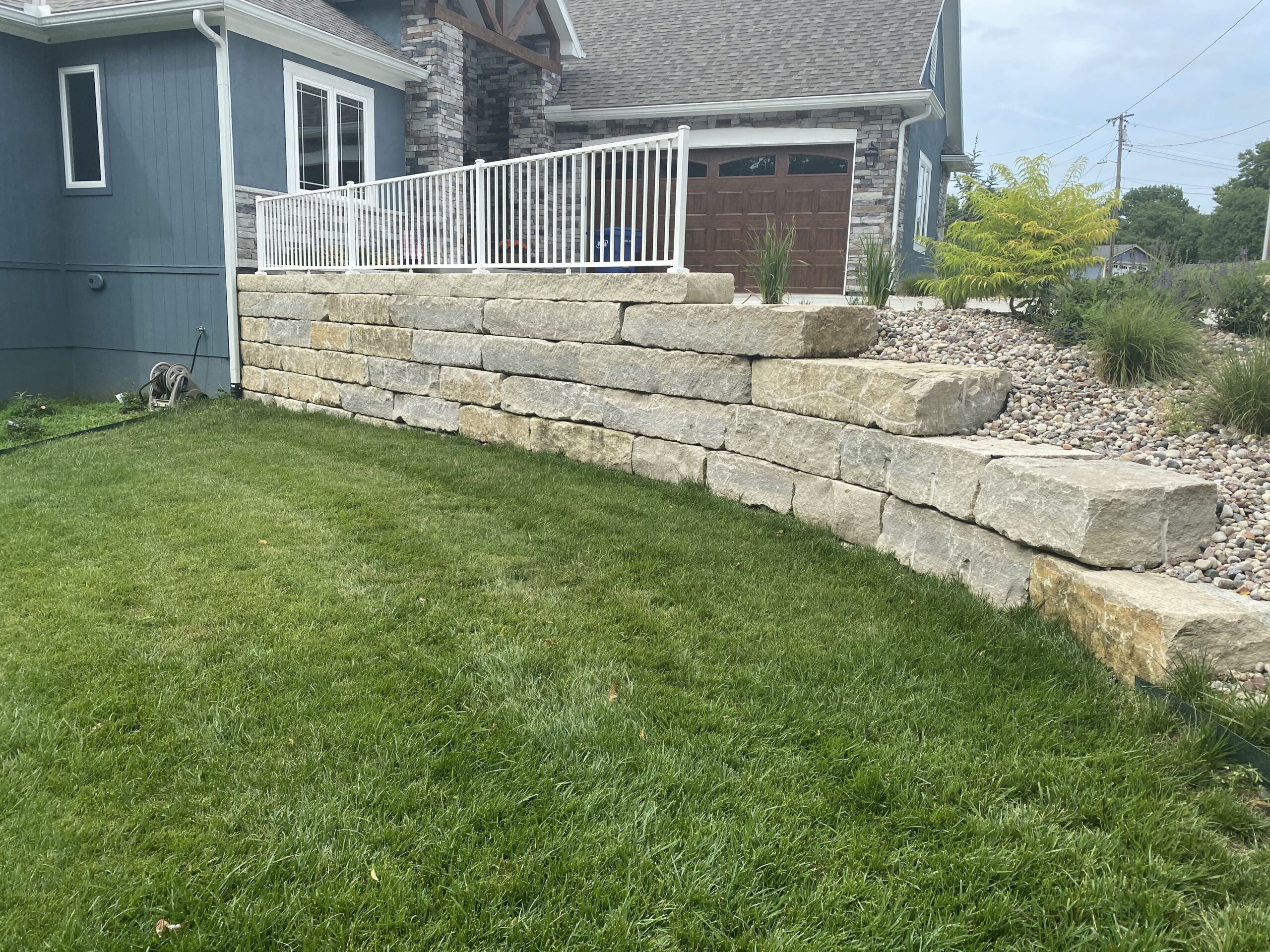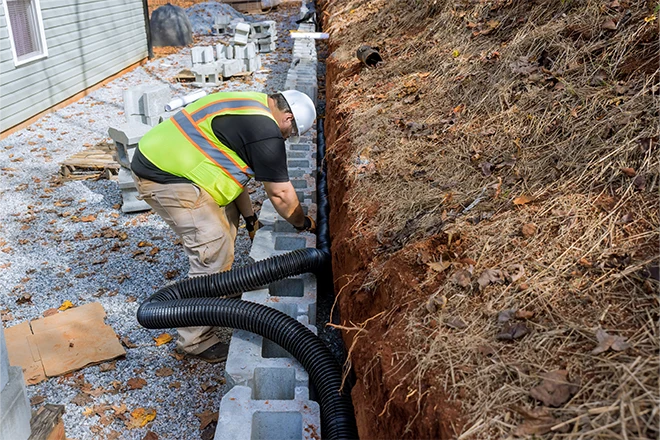These Are The Materials Most People In Kansas City, Missouri Choose For Their Retaining Walls

It’s always a good idea to look into the different material options for your stone retaining wall project. That way, you can find the perfect material for your home and budget!
In this post, you can discover the 3 best types of stone retaining walls that a stone retaining wall landscaper in Kansas City, Mi, uses. You can also find out some of their pros and cons. Lastly, you can also learn what the strongest type of retaining wall is.
Which Should We Choose?
“This wall will be in our yard for years so it needs to be perfect,” says Jennifer.
Michael nods. “Then we should look up the best types of stone for retaining walls. Maybe what the strongest type of retaining wall is too. Oh, and definitely retaining wall costs.”
“That’s a great idea,” -Jennifer picks her phone up off of the table- “so let’s go ahead and do it. Otherwise, we’ll forget about it or push it off until whenever.” She unlocks her phone and starts searching on Google, fingers flying over the keyboard.
“Here we go!” she says excitedly. “These are the types of stone we can choose from. Soon, we’ll have more space in our yard for other projects!”
Here’s what the couple finds out:
3 Best Types Of Stone For Retaining Walls

The three best types of stone for retaining walls are concrete blocks, poured concrete, and dry stacks. Each brings a different look and feel to the yards they’re in. A few other stone options include brick, wood, dry boulder, and gabion.
You can add stone veneer to most types of retaining walls. This makes it look like stone, which most people consider higher-end.
Concrete Block Pros And Cons

Concrete blocks can withstand extreme temperatures and weather conditions. Insects and rodents can’t harm them either, unlike with wood.
Possible cons are concrete blocks are prone to water damage, they can be hard to repair, and they’re more expensive than other materials.
Poured Concrete Pros And Cons
Poured concrete is the strongest type of retaining wall material. It gives a sleek and modern look to any home it’s a part of.
This being said, it’s prone to cracking, and fixing these cracks isn’t easy. You may end up having to replace the whole wall. They can get stained too.
Dry Stack Pros And Cons

Dry stack walls are built without mortar to hold them together. Instead, they lock together to form a solid, durable wall. They have built-in drainage and are easier to build than other types.
The cons are they settle into the ground because they’re not as rigid as other types of stone retaining walls.
The Strongest Type Of Retaining Wall
Poured concrete is the strongest type of retaining wall. It’s one solid piece that forms a smooth-looking wall. The downside is that if it cracks or is otherwise damaged you may have to replace the whole wall.
You May Also Like To Know
“Now we choose, right?” asks Michelle. Michael shakes his head. “I don’t think so, not just yet. I suggest we look through this blog and see what else we can find out.” Michelle nods and the couple starts looking.




Thank you for explaining that concrete is the strongest retaining wall. My cousin has been thinking about getting a retaining wall for her yard since it has a pretty severe slope. I wonder if she would consider this over other materials based on how strong it seems to be.